Daytona International Speedway, located in Daytona Beach, Florida, is a renowned motorsports venue famous for hosting prestigious races such as the Daytona 500, NASCAR's most prestigious race, and the 24 Hours of Daytona, a crown jewel in IMSA racing and a part of the Triple Crown of endurance racing. Opened in 1959, the speedway features multiple track layouts, including a high-speed tri-oval, catering to various racing disciplines like NASCAR, IMSA, ARCA, AMA Superbike, SCCA, and AMA Supercross. The facility boasts a vast infield, encompassing Lake Lloyd, which has even been used for powerboat racing.
November 25, 1957: Construction Begins on Daytona International Speedway
On November 25, 1957, the groundbreaking ceremony took place, marking the official start of construction for Daytona International Speedway.
December 1958: Daytona International Speedway Nears Completion, Faces Financial Challenges
By December 1958, Daytona International Speedway was nearing completion, but the project faced financial constraints.
February 6, 1959: First Practice Run at Daytona International Speedway
On February 6, 1959, the newly constructed Daytona International Speedway hosted its first-ever practice run, allowing drivers to familiarize themselves with the high banks.
February 22, 1959: Inaugural Daytona 500
On February 22, 1959, the inaugural Daytona 500 took place at Daytona International Speedway, marking a historic moment in motorsports history.
1959: Daytona International Speedway Opens
In 1959, the Daytona International Speedway opened its doors to the world. Located in Daytona Beach, Florida, this iconic track was built to host NASCAR races, including the prestigious Daytona 500.
1959: Daytona International Speedway Road Course Construction
In 1959, the construction of the Daytona International Speedway road course was completed, adding another dimension to the racing facility.
1959: Daytona Speedway Hosts High School Football
In the fall of 1959, Daytona International Speedway hosted several high school football games for the Father Lopez Green Wave during their inaugural football season.
1962: Inaugural Daytona Continental Sports Car Race
In 1962, the Daytona International Speedway road course hosted its first major event, a three-hour sports car race known as the Daytona Continental.
1964: Daytona Continental Extended to 2,000 Kilometers
In 1964, the Daytona Continental sports car race at Daytona International Speedway underwent a significant change as its distance was extended to 2,000 kilometers (1,200 miles).
1966: Daytona Continental Becomes Rolex 24 at Daytona
In 1966, the Daytona Continental sports car race at Daytona International Speedway underwent a transformation, evolving into the prestigious 24-hour endurance race now known as the Rolex 24 at Daytona.
1971: First AMA Supercross Championship Round
Daytona International Speedway has consistently hosted an AMA Supercross Championship round since 1971.
1972: Rolex 24 at Daytona Shortened to Six Hours
In 1972, the Rolex 24 at Daytona, the iconic endurance race held at Daytona International Speedway, underwent a significant change as its duration was shortened to six hours.
1973: Chicane Added to Backstretch
In 1973, a sharp chicane was added to the end of the backstretch of the Daytona International Speedway, leading into oval turn three.
1974: Bethune–Cookman Wildcats Play at Daytona Speedway
Daytona International Speedway hosted four college football games featuring the Bethune–Cookman Wildcats in 1974 and 1975.
1974: Rolex 24 at Daytona Cancelled
In 1974, the Rolex 24 at Daytona, the renowned endurance race held at Daytona International Speedway, faced an unexpected cancellation.
1975: Last Year of Bethune–Cookman Wildcats Games
1975 marked the last year that Daytona International Speedway hosted games featuring the Bethune–Cookman Wildcats.
1978: Daytona International Speedway Repaving
In 1978, Daytona International Speedway underwent a repaving project to improve the racing surface and enhance safety for drivers.
1984: Road Course Layout Modified
Daytona International Speedway saw modifications to its road course layout in 1984, including re-profiling turns 1 and 2.
1984: Last Open Wheel Race Before IndyCar Test
The year 1984 marked the last time open wheel cars raced at Daytona International Speedway until the IndyCar compatibility test in 2006.
1985: International Horseshoe and Chicane Modifications
The International Horseshoe turn was moved closer to the preceding turns in 1985. The backstretch chicane was also modified, and a new entry leg was added, creating a three-legged "bus stop" shape and allowing for passing opportunities. These changes resulted in a final length of 3.560 miles for the road course.
1994: Release of "Daytona USA"
Sega released the arcade racing game "Daytona USA" in 1994, featuring a fully detailed 3D model of the Daytona International Speedway circuit for the first time. The game, known for its soundtrack featuring Takenobu Mitsuyoshi's vocals, is considered one of the most successful and influential racing games.
1998: Lights Installed at Daytona International Speedway
In 1998, Daytona International Speedway became a night racing venue with the installation of a state-of-the-art lighting system.
February 18, 2001: Death of Dale Earnhardt
On February 18, 2001, Dale Earnhardt, Daytona International Speedway's most successful driver with 34 career victories, tragically died on the final lap of the Daytona 500.
2003: Backstretch Chicane Repaved and Widened
In 2003, Daytona International Speedway's backstretch chicane underwent further modifications. The middle leg was repaved and widened, changing the entry and exit points for smoother transitions into oval turn three.
2004: Daytona International Speedway Infield Renovation
In 2004, Daytona International Speedway underwent a significant renovation project that focused on enhancing the infield area of the track.
2004: Fanzone Built
In 2004, as part of a track renovation, the Hard Rock Bet Fanzone (originally the UNOH Fanzone) was constructed, giving fans closer access to drivers, garages, and other interactive activities.
2004: Infield Renovation Completed
The first major infield renovation in track history concluded in 2004. The project involved landscaping, new buildings (including garages and a club), and a pedestrian tunnel under turn 1.
2005: Daytona Infield Renovation Wins Award
The infield renovation project won a 2005 Award for Excellence from Design-Build Institute of America.
2005: Second Infield Road Course Constructed
A second infield road course configuration, designed primarily for motorcycles, was constructed at Daytona International Speedway in 2005. This 2.950-mile course bypassed oval turns 1 and 2 due to tire wear concerns on the banked sections. However, the Daytona SportBike class utilizes the main road course, except for a tighter motorcycle-specific hairpin turn.
2006: IndyCar Compatibility Test
On September 26 and 27, 2006, the IndyCar Series conducted a compatibility test on two modified road courses at Daytona International Speedway. This marked the first time open wheel cars had been on the track since 1984.
February 1, 2007: IndyCar Full Test
On February 1, 2007, IndyCar held a full test at Daytona International Speedway involving 17 cars, marking a return to the track.
2008: Ricky Carmichael Designs Supercross Track
Former champion Ricky Carmichael began designing the supercross track layouts at Daytona International Speedway during Daytona Beach Bike Week, starting in 2008. These tracks are known for their unique sand-heavy composition.
2008: Losail International Circuit Surpasses Daytona as Largest Lighted Outdoor Sports Facility
In 2008, Losail International Circuit in Qatar surpassed Daytona International Speedway as the world's largest single lighted outdoor sports facility.
December 2009: Daytona Flat Track Opens
In December 2009, the Daytona Flat Track, a new quarter-mile dirt track, opened outside turns 1 and 2 of the main superspeedway. This was built to accommodate dirt-track racing events after the Daytona Beach Municipal Stadium replaced its surface, making it unsuitable for such races.
July 15, 2010: Daytona International Speedway Repaving Begins
On July 15, 2010, a repaving project commenced at Daytona International Speedway, addressing track surface issues that had arisen during the 2010 Daytona 500.
2010: Third Leg of Chicane Removed
Following positive results from the 2003 modifications, the third leg of the backstretch chicane at Daytona International Speedway was demolished and permanently removed in 2010.
2010: Daytona International Speedway Repaving
In 2010, Daytona International Speedway underwent another repaving project to address wear and tear on the track surface and ensure optimal racing conditions.
2010: Daytona Flat Track Begins Hosting AMA Grand National Championship
The Daytona Flat Track began hosting the AMA Grand National Championship in 2010.
February 2012: Short Track Construction Announced
In February 2012, plans for a 0.400-mile paved short track along the backstretch of Daytona International Speedway were announced. This track, intended for NASCAR's lower-tier series during Speedweeks, would be named the UNOH Battle at the Beach.
January 22, 2013: Daytona Rising Renovation Unveiled
On January 22, 2013, Daytona International Speedway unveiled plans for its fourth major renovation project, known as "Daytona Rising."
February 2013: First Races at UNOH Battle at the Beach
The first races at the newly constructed UNOH Battle at the Beach short track were held in February 2013.
July 5, 2013: Groundbreaking for Daytona Rising
On July 5, 2013, Daytona International Speedway officially broke ground on the ambitious "Daytona Rising" renovation project.
October 9, 2013: Colin Braun Sets Single-Lap Record at Daytona International Speedway
On October 9, 2013, driver Colin Braun, piloting a Daytona Prototype car for Michael Shank Racing, etched his name in the record books by setting a new single-lap record on the tri-oval configuration of Daytona International Speedway.
2013: End of Carmichael's Design Influence
The year 2013 marked the end of Ricky Carmichael's influence on the supercross track design at Daytona International Speedway during Daytona Beach Bike Week.
2014: Chitwood Expresses Interest in Football's Return
In early 2014, Daytona International Speedway president Joie Chitwood expressed a desire to bring football games back to the track.
2014: Short Track Length Shortened
The UNOH Battle at the Beach short track was shortened from 0.400 miles to 0.375 miles in 2014.
2015: Budweiser Party Porch Demolished
After the 2015 racing season, the Budweiser Party Porch, a popular fan destination, was dismantled along with the backstretch grandstands as part of the DAYTONA Rising project.
2015: Future of Short Track Uncertain
The future of the UNOH Battle at the Beach short track became uncertain after 2015 following the demolition of the back straightaway grandstands as part of the Daytona Rising project.
January 2016: Daytona Rising Renovation Completed
In January 2016, the extensive "Daytona Rising" renovation project at Daytona International Speedway reached its completion, just in time for the start of Speedweeks.
December 9, 2016: UNOH Purchases Fanzone Naming Rights
On December 9, 2016, the University of Northwestern Ohio secured the naming rights to the fanzone, renaming it the 'UNOH Fanzone'.
2016: Last Year of AMA Grand National Championship at Daytona Flat Track
2016 marked the last year the AMA Grand National Championship was held at the Daytona Flat Track before being moved to the tri-oval section in 2017.
2017: AMA Grand National Championship Moves to Tri-Oval Section
In 2017, the AMA Grand National Championship was moved from the Daytona Flat Track to the tri-oval section of Daytona International Speedway, becoming a TT course.
2017: Release of "Daytona Championship USA"
The latest installment in the Daytona USA series, "Daytona Championship USA," was released in arcades in 2017.
2019: Previous Lap Record Set
In 2019, Oliver Jarvis set a lap record at the Daytona International Speedway road course in a Mazda RT24-P, which stood until 2024.
July 8, 2020: NASCAR Announces Daytona Road Course Races
Due to COVID-19 restrictions in New York, NASCAR announced on July 8, 2020, that it would race the Daytona road course for the first time in its national series in mid-August.
2022: Daytona Soccer Fest
Daytona International Speedway hosted Daytona Soccer Fest on July 2 and 3, 2022. This two-day event featured a friendly match between Colombian rivals América de Cali and Deportivo Cali and a NWSL regular season match between the Orlando Pride and Racing Louisville FC.
January 2023: Track Records Updated
As of January 2023, new track records were established on the 2.500 mile tri-oval.
January 21, 2024: Pipo Derani Sets New Lap Record
On January 21, 2024, Pipo Derani set the fastest lap ever recorded on the modern Daytona road course, clocking in at 1:32.656 in a Cadillac V-Series.R during qualifying for the 24 Hours of Daytona. Remarkably, all IMSA GTP class entrants during this session surpassed the previous record set by Oliver Jarvis in 2019.
January 25, 2024: Hard Rock Cafe Acquires Fanzone Naming Rights
On January 25, 2024, Hard Rock Cafe purchased the fanzone naming rights. It was subsequently renamed the 'Hard Rock Bet Fanzone' after their sports betting platform.
March 2024: Road Course Records Updated
The fastest official race lap records on the road course layouts were updated as of March 2024.
2054: Daytona International Speedway Lease Expires
In 2054, the current lease agreement between NASCAR and the City of Daytona Beach for the operation of the Daytona International Speedway is set to expire.
Mentioned in this timeline
Qatar is a country located on the Qatar Peninsula in...
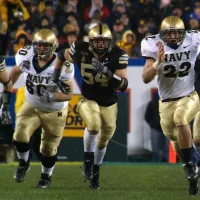
College football is a popular amateur sport in the United...
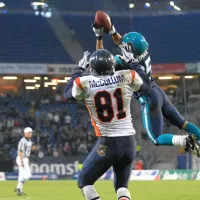
Football encompasses a variety of team sports centered on kicking...
France officially the French Republic is a country primarily in...
Florida a state in the Southeastern United States is largely...

A car also known as an automobile is a wheeled...
Trending

12 minutes ago Ballerini's Song Fuels Speculation About Stokes & Cline's Relationship Dynamics
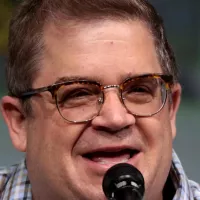
Patton Oswalt is an American stand-up comedian and actor known for his diverse roles in television He gained recognition as...
2 days ago James Franklin in Talks with Virginia Tech, Candidate for Historic Team.
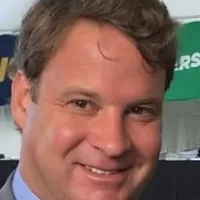
Lane Kiffin is an American football coach currently the head coach at Ole Miss He gained prominence through assistant coaching...
Wolfchase Galleria is a regional shopping mall located in northeast Memphis Tennessee managed by Simon Property Group Situated at the...
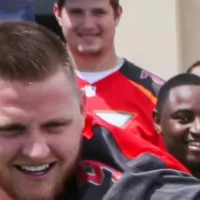
7 months ago Matt Gay joins Commanders with record-breaking one-year deal, replacing Zane Gonzalez.
Popular

XXXTentacion born Jahseh Dwayne Ricardo Onfroy was a controversial yet...
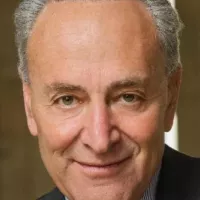
Chuck Schumer is the senior United States Senator from New...

Bernie Sanders is a prominent American politician currently serving as...

Candace Owens is an American political commentator and author known...

Cristiano Ronaldo often nicknamed CR is a Portuguese professional footballer...
Turning Point USA TPUSA is an American nonprofit organization founded...